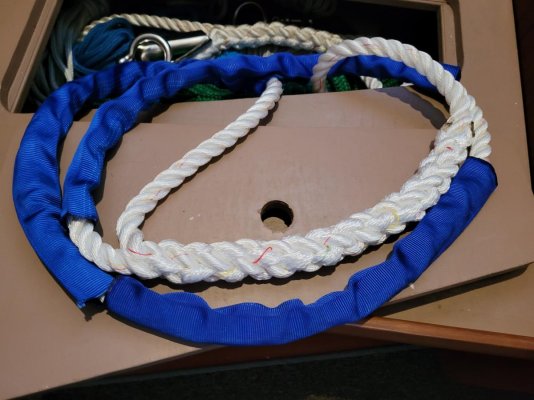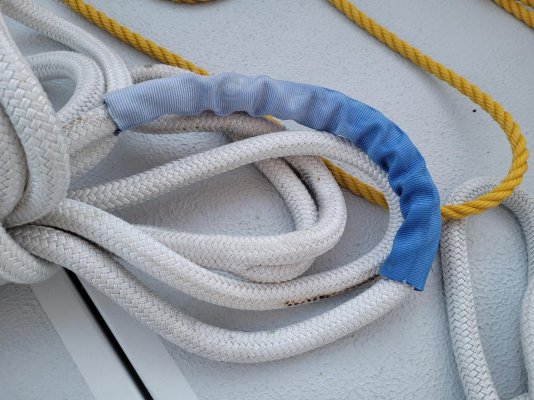diver dave
Guru
- Joined
- Jan 13, 2017
- Messages
- 2,570
- Location
- United States
- Vessel Name
- Coquina
- Vessel Make
- Lagoon 380
Got some basic questions here for discussion. Basically, it comes down to when to use anti-chafing gear when high winds are expected, docked or anchored.
I know, and have seen, that anyplace there is movement of the highly stressed line against a fixed object, there will be wear. My boat has no chocks or hawsepipes where line passes, only cleats. Does a cleat knot situation warrant chafing gear? What about line wrapped around a 10” diameter wood piling? Is it better to use a chafe-guarded loop around a cleat, or to do the proper cleat attach knot?
Is there a place for dynema in the discussion? Like maybe around the cleat itself, minimizing stretch/abrasion?
Best to figure this out now, before H season[emoji106]
I know, and have seen, that anyplace there is movement of the highly stressed line against a fixed object, there will be wear. My boat has no chocks or hawsepipes where line passes, only cleats. Does a cleat knot situation warrant chafing gear? What about line wrapped around a 10” diameter wood piling? Is it better to use a chafe-guarded loop around a cleat, or to do the proper cleat attach knot?
Is there a place for dynema in the discussion? Like maybe around the cleat itself, minimizing stretch/abrasion?
Best to figure this out now, before H season[emoji106]
Last edited:


